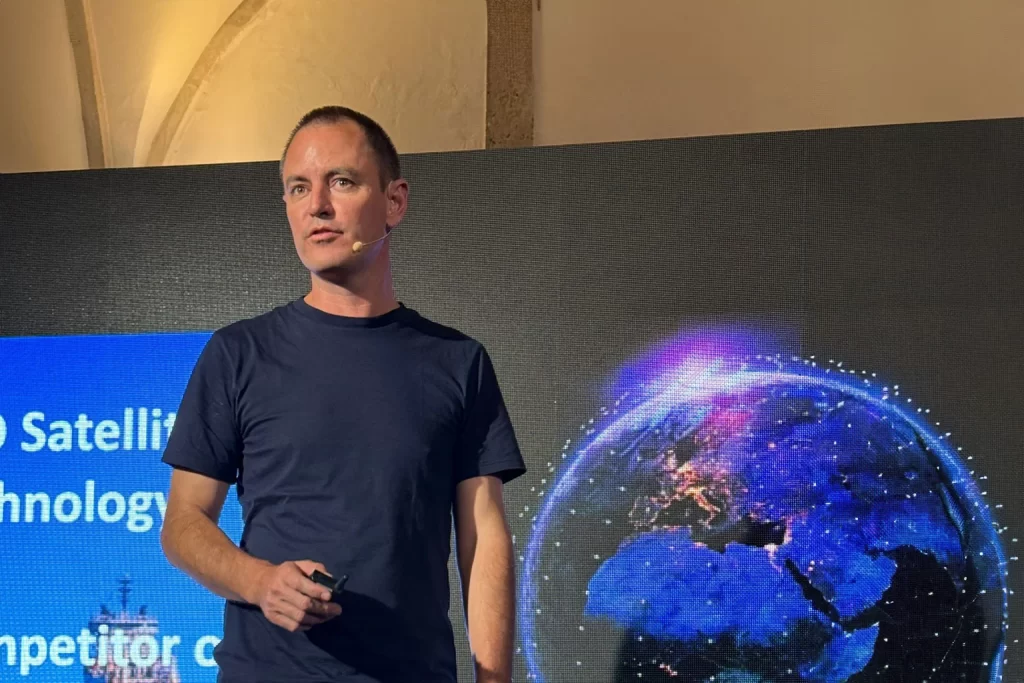A one-stop satellite communications solution is no longer viable, following the recent, sudden and unexpected loss of Intelsat IS-33e, which is a key satellite serving Europe, Africa and parts of Asia Pacific. This disaster alone highlights how critically important it is to build redundancy and resilience into satellite communication networks. Paratus Group CTO, Rolf Mendelsohn says that a multi-layered approach to satellite solutions is essential. “In today’s interconnected world, network outages have far-reaching consequences. That’s why it’s crucial to build redundancy and resilience into a satellite communications system. To guarantee your communications efficiency, resilience and redundancy, diversity needs to be leveraged through new strategies that include a few key factors.”
Multiple Teleport Locations:
By utilizing teleports in different geographical locations, built-in redundancy is created and if one teleport experiences issues due to weather, power outages, or other localized problems, traffic can be quickly rerouted through alternate locations.
If one teleport experiences a problem due to power outages or local factors it can be rerouted.
Mendelsohn says: “At Paratus, for example, we operate two teleports in Angola, one in Namibia and Botswana, and another in South Africa. These teleports connect more than eight satellites, providing us with significant redundancy and coverage across the African continent.”
Diverse Satellite Technologies:
Incorporating both geostationary (GEO) and low Earth orbit (LEO) satellites into network planning provides complementary capabilities. GEO satellites offer wide coverage areas with tried and tested stability, whereas LEO constellations offer far superior lower latency and much higher throughput.
Redundant Satellite Hubs:
Implementing multiple satellite hubs adds another layer of protection. If one hub experiences technical difficulties, others can take over seamlessly, ensuring continuous service for customers.
Mendelsohn says: “We’re proud to partner with renowned global leaders in LEO technology provision, which enables us to deliver cutting-edge solutions that drive innovation and enhance our service offerings worldwide. These partnerships reflect our commitment to excellence and showcase our dedication to staying at the forefront of technological advancements.”
Redundancy across different satellites:
Years ago, Paratus suffered from tremendous upheaval due to the failure of AMOS 5, at 4:44 GMT+1 21 November 2021. Splitting very large Enterprise networks across at least different satellites became an essential hard-learned lesson. If one hub experiences technical difficulties, others can take over seamlessly, ensuring continuous service for customers.
The Paratus satellite infrastructure reflects this approach as Mendelsohn explains: “Our teleports operate across multiple frequency bands: C-Band, Ku-Band, and Ka-Band, allowing us to optimize connectivity based on specific customer needs and geographical conditions. We’ve also integrated Low Earth Orbit connectivity into our service offerings, including Starlink services in various African markets, further diversifying our network capabilities.”
As the satellite industry continues to evolve, with new constellations and technologies coming online, this focus on building resilience will only grow in importance. By adopting comprehensive, multi-layered strategies, satellite network operators can provide the reliable, always-on connectivity that modern businesses and consumers demand.
For organizations needing to enhance the resilience of their satellite communication infrastructure, expertise and strategic planning are key. Rolf Mendelsohn stresses that each organization’s requirements are unique and that building a truly resilient network requires a tailored approach. “At Paratus Group, we’re committed to helping businesses develop robust satellite communication strategies that can withstand unexpected challenges. A multi-faceted approach helps mitigate risks associated with potential satellite failures, such as the recent Intelsat 33e incident. By distributing network components across different technologies and locations, providers can ensure greater overall system reliability.
“The goal is to create a network that’s resilient enough to withstand the loss of any single component without causing widespread service interruptions. This level of redundancy is becoming increasingly critical as more industries and services rely on satellite communications for their operations.”For more information about Paratus Group satellite communications or to discuss your strategy, sales@paratus.africa.




